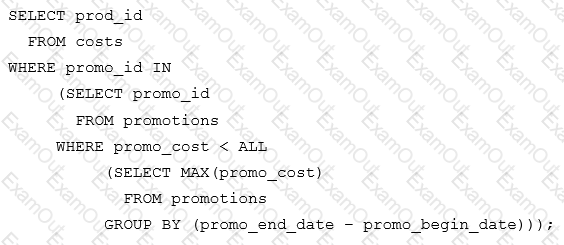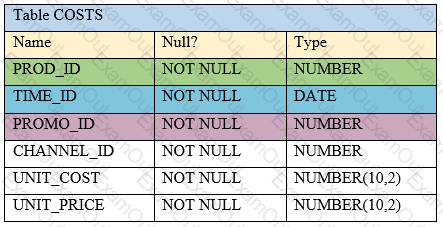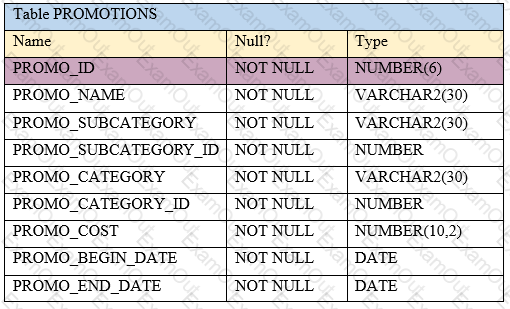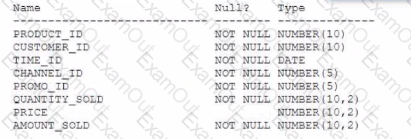View the Exhibits and examine the structure of the COSTS and PROMOTIONS tables.
You want to display PROD_IDS whose promotion cost is less than the highest cost PROD_ID in a promotion time interval.
Examine this SQL statement:

Exhibit 1.

Exhibit 2.

What will be the result?
Which three statements are true about views in an Oracle database? (Choose three.)
Examine the description of the CUSTOMERS table:

For customers whose income level has a value, you want to display the first name and due amount as 5% of their credit limit. Customers whose due amount is null should not be displayed.
Which query should be used?
Which two tasks can you perform using DBCA for databases? (Choose two.)
Which two statements are true about Enterprise Manager Database Express? (Choose two.)


Which two statements are true?
Which three statements are true about Deferred Segment Creation in Oracle databases?
Which statement is true about database links?
Which three statements are true about table data storage in an Oracle Database? (Choose three.)
A database is configured to use automatic undo management with temporary undo enabled.
An UPDATE is executed on a temporary table.
Where is the UNDO stored?

